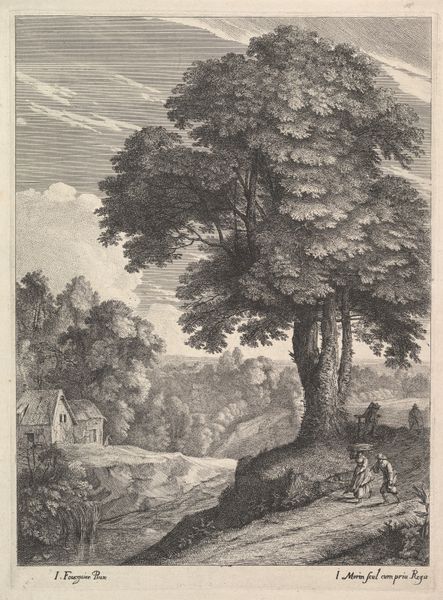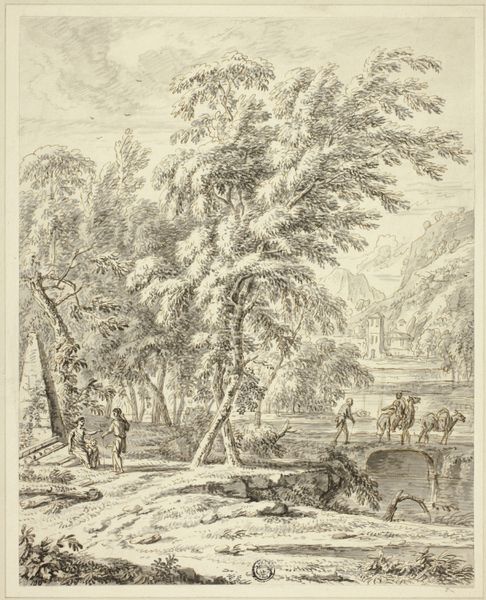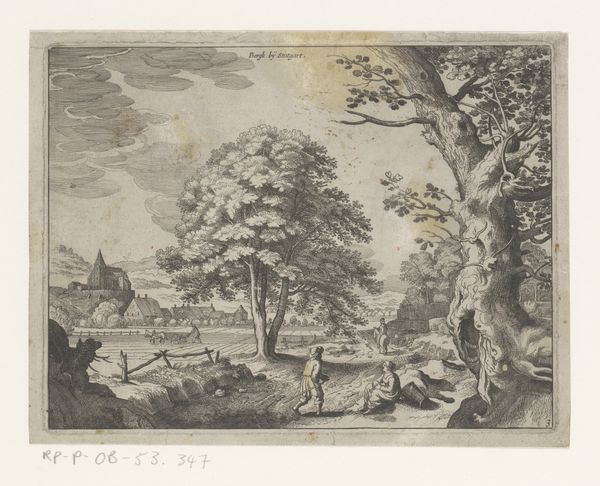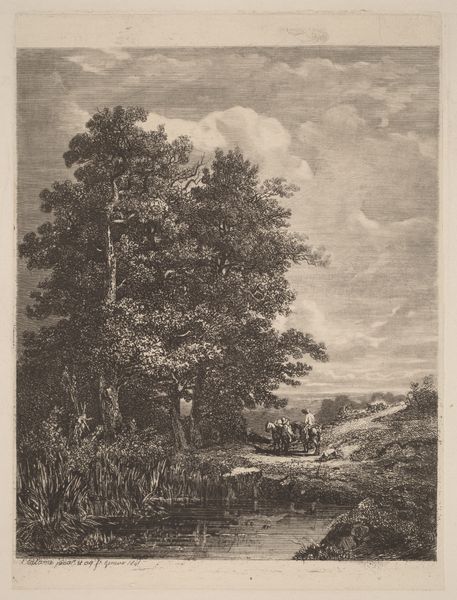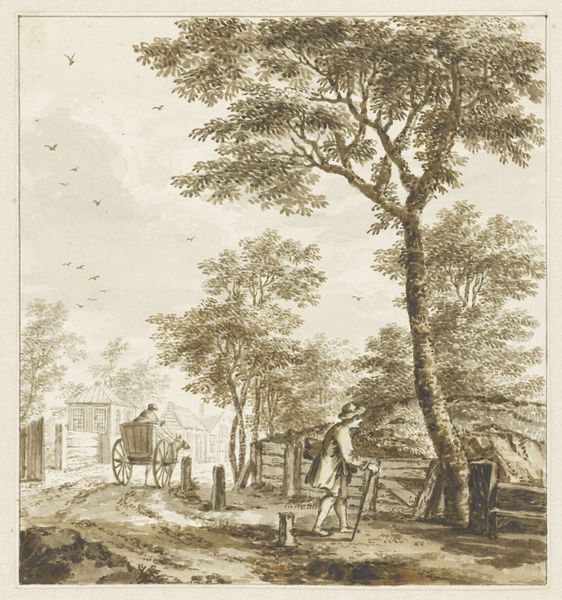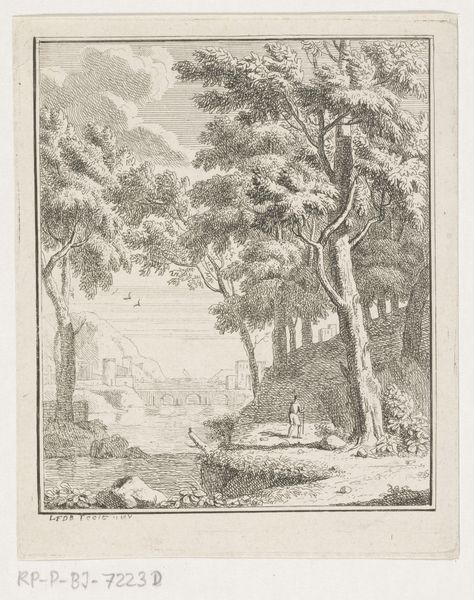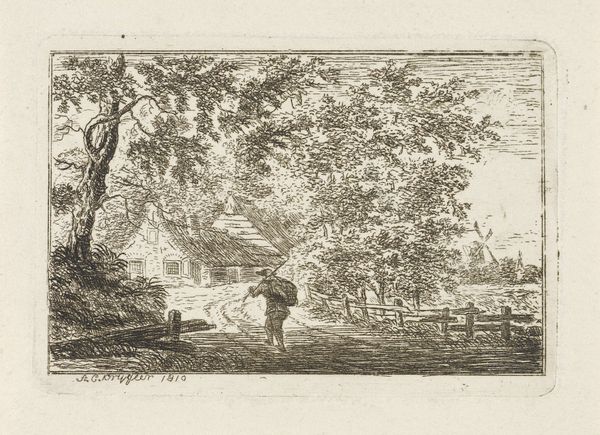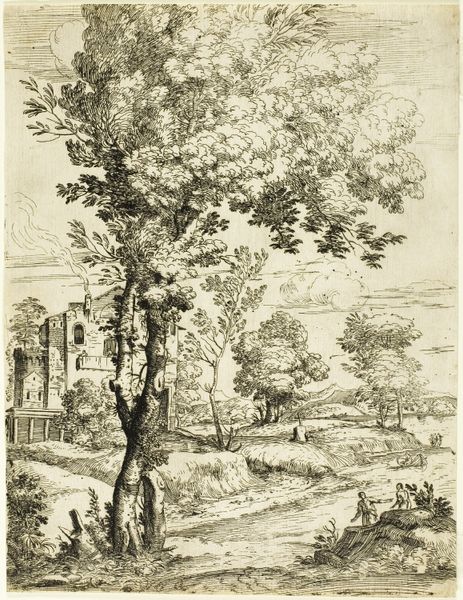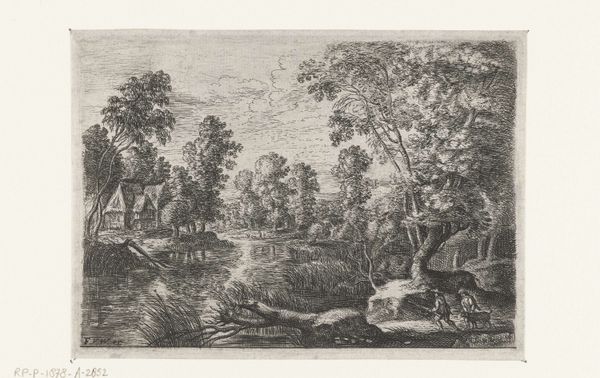
print, etching
# print
#
etching
#
old engraving style
#
landscape
#
etching
#
rococo
Dimensions: height 171 mm, width 136 mm
Copyright: Rijks Museum: Open Domain
This landscape scene was made by François Deroy using etching, a printmaking technique with a long history. The image starts as a bare metal plate, usually copper or zinc. The artist covers the plate with a waxy, acid-resistant substance called a ground, and then draws through it with a sharp needle, exposing the metal underneath. Next, the plate is immersed in acid, which bites into the exposed lines, creating grooves. The longer the plate stays in the acid, the deeper the lines become, and the darker they will appear when printed. The plate is then inked and wiped clean, leaving ink only in the etched lines. Finally, damp paper is laid on the plate, and both are run through a press, transferring the image onto the paper. The result is a finely detailed image that captures the textures and tones of the Flemish countryside. Printmaking processes like etching allowed for the relatively easy reproduction and distribution of images like this one, feeding a growing market for art among the rising merchant classes. It’s a fascinating reminder that even seemingly straightforward landscape scenes have a rich and complex social history embedded within them.
Comments
No comments
Be the first to comment and join the conversation on the ultimate creative platform.
